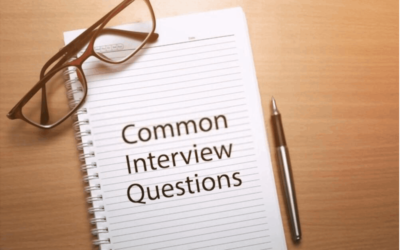When you picture yourself working in a job, what visual comes to your mind?
Sitting at a desk and writing a magazine article,
Sanding at a construction site supervising workers, or
Speaking on the phone answering customer queries?
So, you know your dream job, but not sure how to get it. You want to build a career that channelizes your passion and brings you a good income.
The path to your dream job won’t happen on its own. Getting this dream job and building a dream career needs the proper planning and guidance. It requires time and effort in the right direction.
This is the only article you need to read to land a fantastic job. Getting a job requires seven steps only. I have outlined these seven steps in this article. Well, I have included links to other articles that further deep dive into each specific step.
Let’s get started.
1. Personal profile evaluation and career plan
This is the first step. A personal profile is a self-reflection tool that puts together your interests, values, skills, aspirations, and strengths and weaknesses. It describes who you are, what are your values, and what type of jobs are the best fit for your skills. Personal profile and career plan are helpful in making career decisions whether you are finding your first job or trying to build a rewarding career.
Use this toolkit to Create A Career Plan that’s a good fit for your personal and professional interests.
2. Job Research and Informational Interviews
With the vast amount of information available on the internet, you gain first-hand knowledge about various jobs. It is essential to do job research so that you can widen your perspective about possible career paths. If you’ve studied biology, you can choose to be a teacher, wildlife biologist, researcher, health & nutritionist. To make the right career decision, you need to know the possible career paths and what each one takes.
Two good sites that give details of many jobs are Totaljobs and Prospects. There are more than 200 job profiles listed on each of these sites. Take out some time to go through the different job profiles and see if anything catches your interest.
Apart from job research on the internet, you can also do informational interviews. Now, you’ll ask what informational interviews are? An informational interview is a conversation between a job seeker and a professional from a specific career field to gain insights into the job, industry, and company.
Informational interviews need not take place in the professional’s office. You can talk in a café, over the phone, or on Skype.
You must be wondering where to find these professionals. It isn’t tough. Think about all the people you’ve met in the past, maybe through your friends, cousins, and other family members. Contact them.
LinkedIn is another good way to connect with professionals. Don’t expect everyone will respond to your request for an informational interview. But, if you approach in a mature and professional way, most people will do.
I really liked these two articles that give detailed instructions on how to conduct informational interviews:
Conduct Informational Interviews
Remember, the objective of informational interviewing is to get information and advice, not a job. So, don’t ask for a job.
3. Networking with recruiters and HR managers
Do you feel shy about staying in touch with recruiters and HR managers because it makes you feel like a pest?
That’s wrong thinking. Recruiters and HR managers appreciate people who stay in touch with them in a positive and professional way. Of course, if you crib about your current job and keep asking about new job openings, you may come across as a pest. Don’t do that!
If your request for an interaction looks like this, “Hi, I don’t know you but would love to work at your company. Are there any openings for me?” it would definitely meet with a cold response.
There are other constructive ways to network with recruiters and HR managers.
Build an ongoing long-term relationship that goes beyond getting a job. Show the recruiters and hiring managers that you genuinely value your relationship with them.
- Connect with them on social media and participate in discussions.
- Share your knowledge about different topics.
- Join LinkedIn Groups of your interest, and be an active participant in discussions.
- Refer other strong candidates for job openings.
Glassdoor has advice very succinctly on what is The Right Way to Network with a Recruiter on LinkedIn.
4. Tailor your CV to job listings
When you submit your resume, it is first filtered by an Applicant Tracking System software (ATS) to check whether or not it matches the job requirements. After the ATS, your resume undergoes a 7-second quick scan by the recruiter. It’s only after these two stages that your resume qualifies for the first round of interview.
So, what should you do to get your resume to pass the ATS and 7-second recruiter scan?
Customize your resume for the job position you are applying to show you are a good fit and deserve further consideration.
Don’t worry. There is no need to do a complete overhaul for every job opening. All you need to do is identify the keywords in the job ad and make sure you include those keywords in your CV.
A customized CV tells the recruiter that you have the specific skills and knowledge for the job position.
Refer to this article to perfectly tailor your CV to job listings:
5. Create a must-read cover letter
Wherever possible, do submit a cover letter with your resume. A cover letter is something that is read even before the recruiter opens up your resume attached in the email. This is the point of the first impression and make it a good one.
Instead of reiterating what’s already there in your CV, use a cover letter to highlight your interest in the role and how your skills and experience add value to the company’s culture and performance.
Learn more about how to write a winning cover letter
6. Connect directly with the hiring manager
Are hiring managers different from recruiters? YES
A recruiter is the one who manages the hiring process like screening CVs, scheduling interviews, and sending offers.
A hiring manager is the one who is from the same department in which the new employee is to be hired. The hiring manager is the final decision maker who decides whether to hire or reject a candidate.
Many job seekers are caught in the dilemma of whether to connect or not connect with the hiring manager on LinkedIn. Let me tell you from experience it is perfectly fine, rather useful to connect directly with the hiring manager on LinkedIn.
When you take out time to introduce yourself and explain your interest in the company, it shows how proactive and professional you are. Hiring managers appreciate a candidate who goes beyond the normal to stand out from the crowd.
Learn about how to connect with a hiring manager. Be proactive but not pushy.
7. Nailing the interview with ease
No job process is without an interview. The thought of an upcoming job interview makes most job seekers nervous and anxious. Nailing a job interview isn’t as tough as you may think. I know the struggle the job interviews present. With the right strategy and proper practice, you can ace any job interview.
It is not just the words that you speak in an interview, but the non-verbal cues like a confident smile, handshake, and eye contact, that matter too.
From greeting the receptionist before the interview to sending a thank you email to the interviewer post-interview, you need to follow some simple steps to get the desired results.
Read these tips and tricks to nail the five most asked job interview questions.




